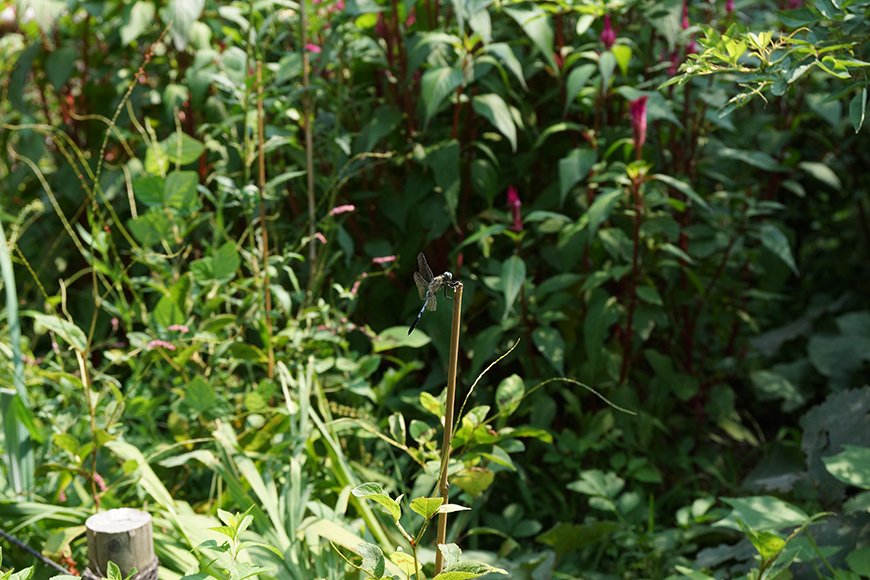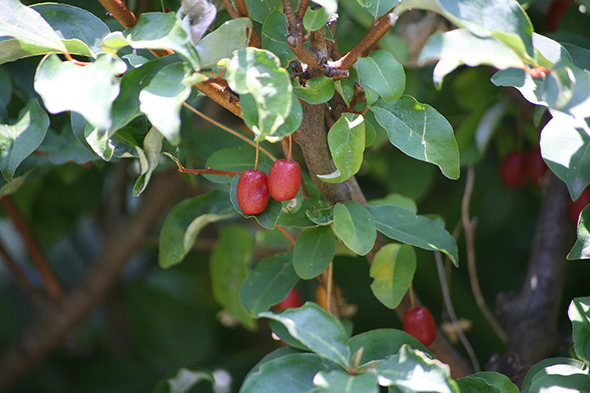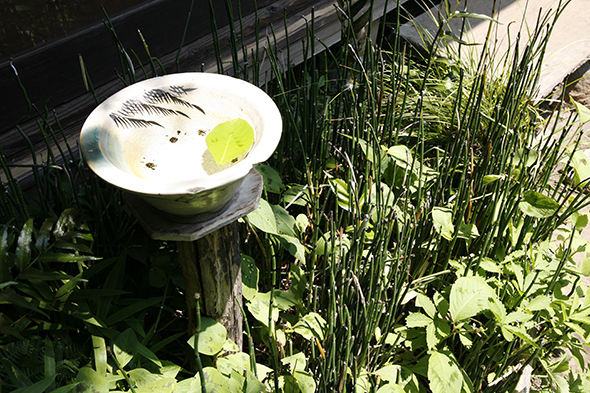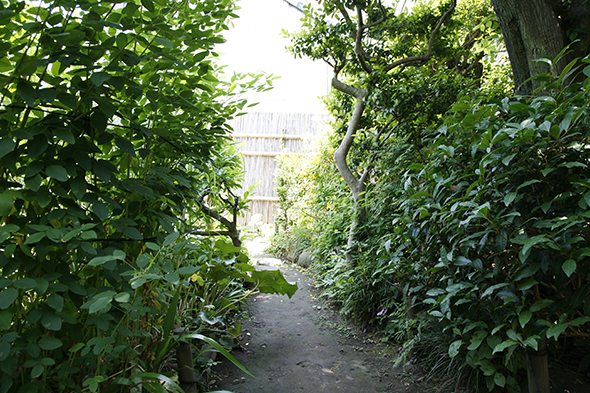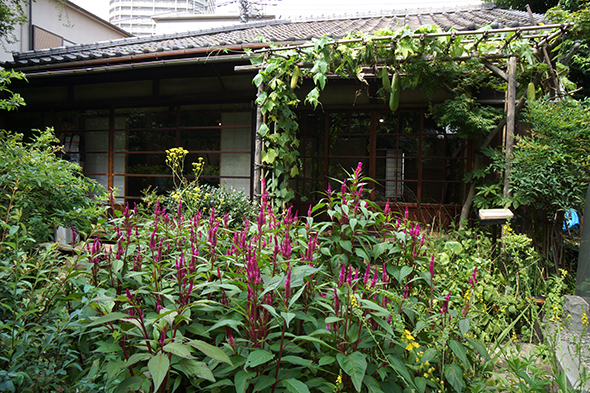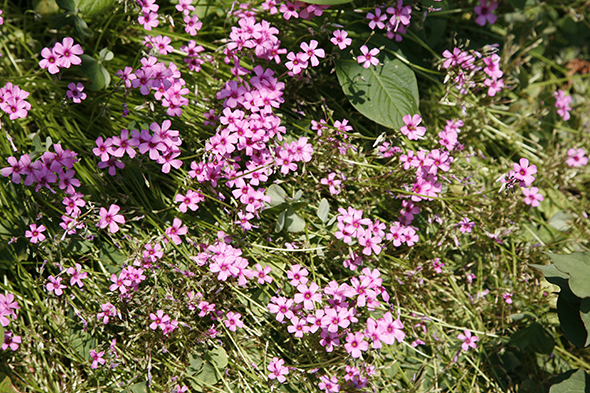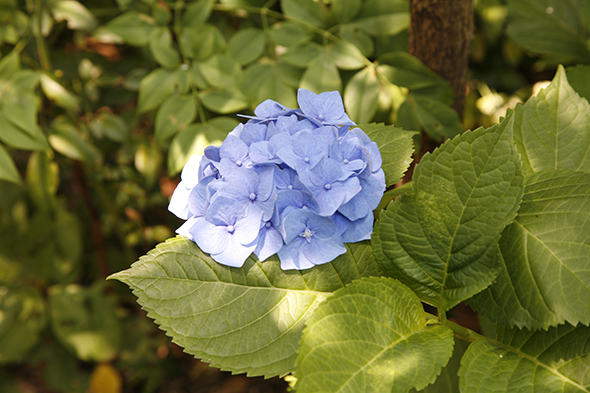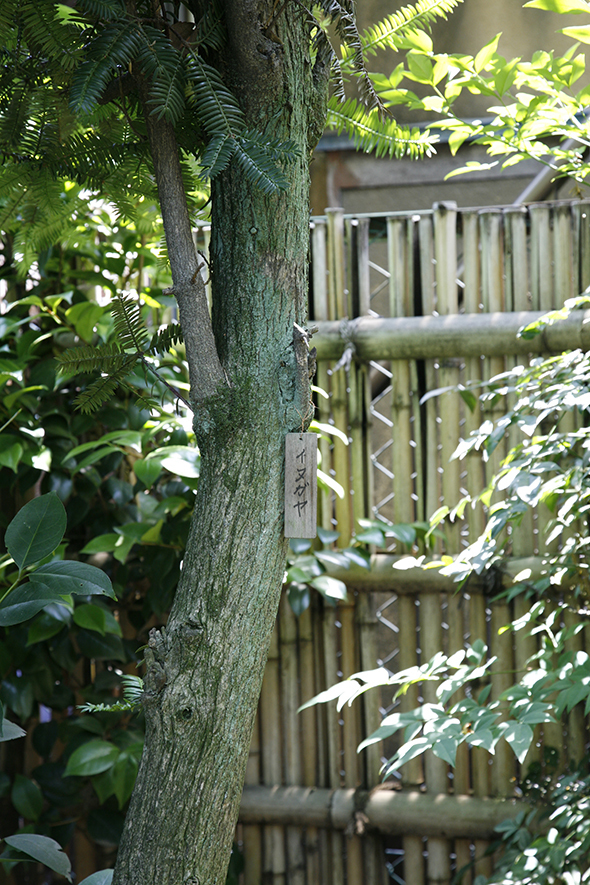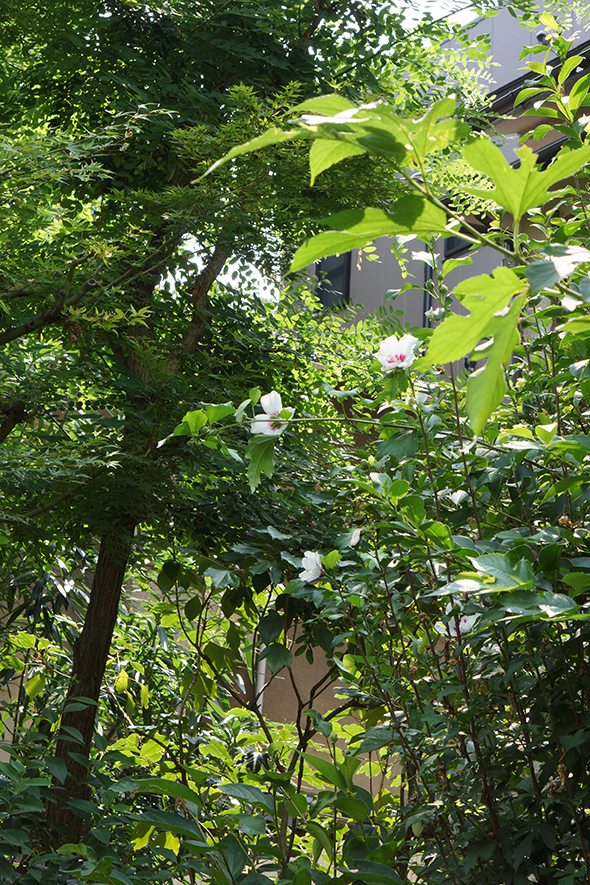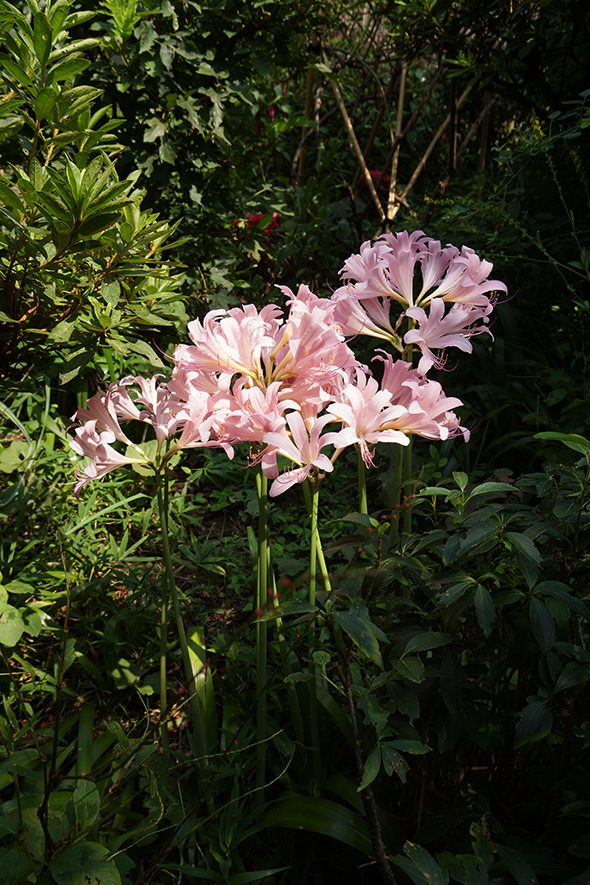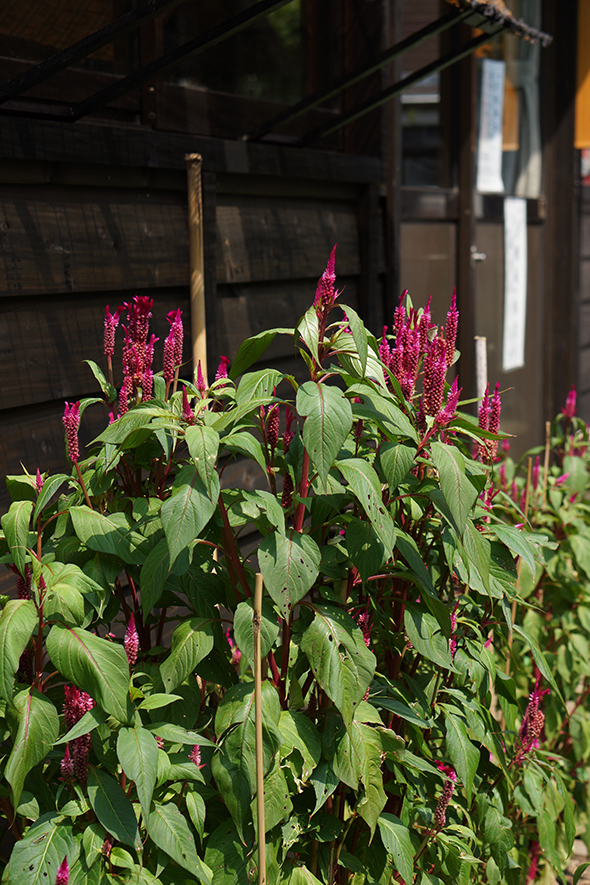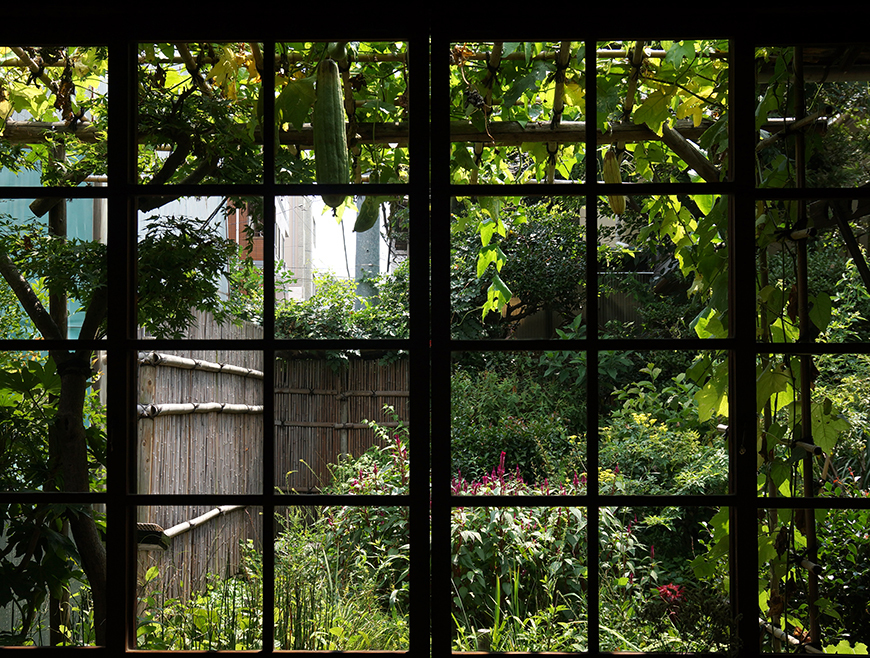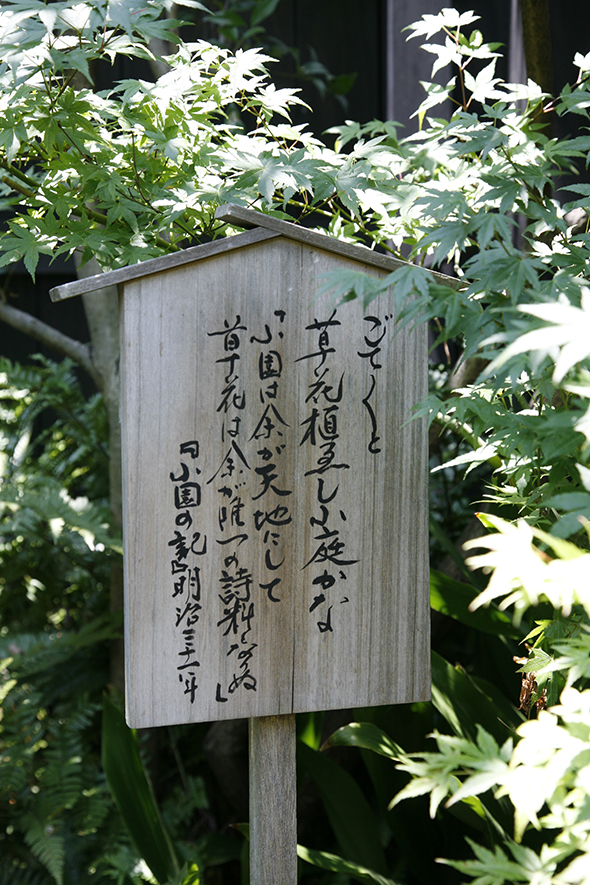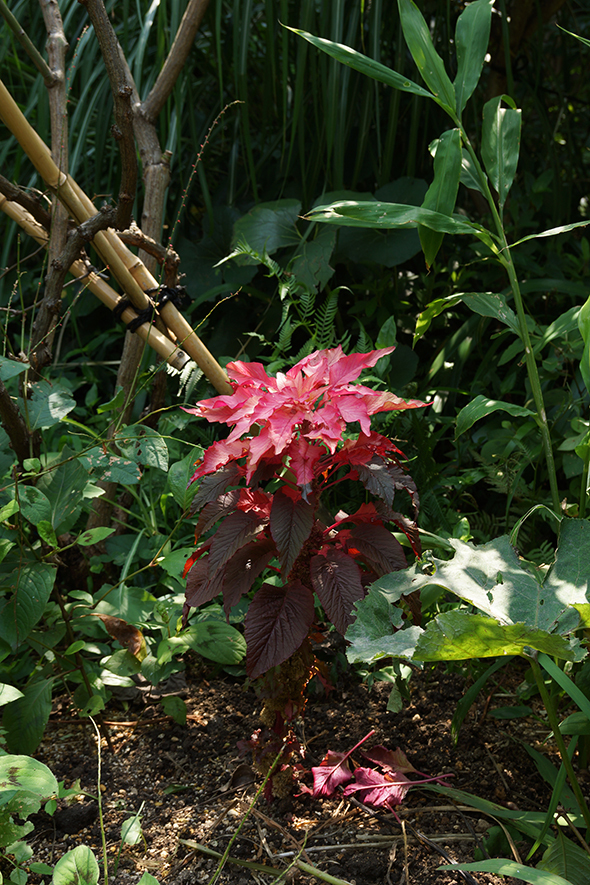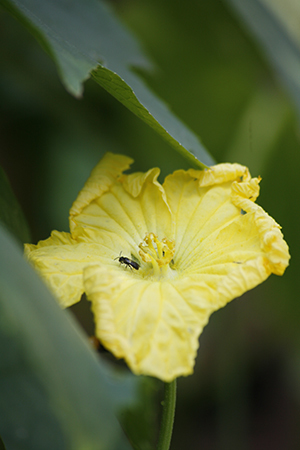
Ritsu, a sister of Shiki, and his friends planted a variety of flowers and trees in the garden of Shikian. Illustrations of the small garden are on "Shoen no Ki," in which each flower and tree, including a Japanese chinquapin, bamboo, pine tree, bush clover, beard, cockscomb, Chinese bellflower, morning glory, hardy begonia, marvel-of-Peru, Joseph's coat and common zinnia, are described by his haiku poems. Both a moss rose and its alias "hideriso" appear in those poems. Shiki's favorite roses and loofahs that seem to be symbols of Shikian were not yet planted in those days. The trellis of loofahs was made in 1901.
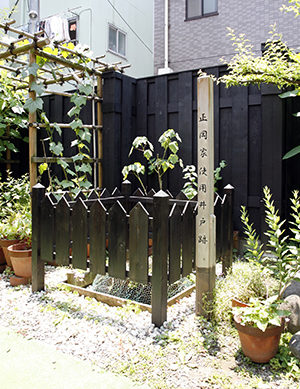
"Shoen no Ki" at Aozora Bunko
"Byosho Rokushaku" at Aozora Bunko
"Bokujyu Itteki" at Aozora Bunko
Shiki wrote an essay about the garden of Shikian, which was titled "Shoen no Ki," in the haiku magazine "Hototogisu" in 1898. The essay begins with the phrase "I have a small garden of 66 square meters," and he wrote that, when he moved in this house, the garden cleared from a bamboo thicket was bare with almost no trees and plants, so a house owner planted three small pine trees, and he also planted young roses, which were given by an old woman next door, in the garden. He said that, when the four or five roses bloomed, he was encouraged to compose haiku and tanka poems. "I want to dance for joy," he expressed when long-awaited flowers of bush clovers bloomed at the end of August after the season of morning glories ended, and also wrote that he was anxious about wind that might affect plants when autumn arrived. We feel as if we can actually see the garden through his descriptions. We can imagine that the growth of those small trees and plants in the garden sustained his literature and struggle with illness when reading his passages, such as "The small garden is all I need, trees and plants inspire me to compose poems." He wrote a haiku poem at the end of his essay, which is reflected in the present-day garden in Shikian.
ごてごてと草花植ゑし小庭かな 子規
Trees and flowers are thickly planted, In the small garden Shiki
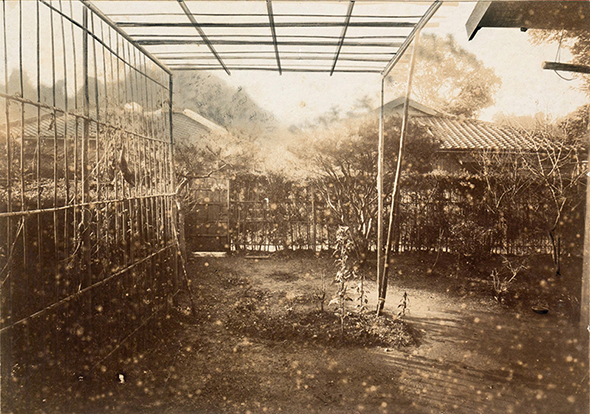
The small garden around 1901 (Material deposited from Shikian)
The left trellis of loofahs was made by a gardener in June 1901. It was about twice as large as the present one. The front hedge on the south side had a garden gate. The hill of Ueno is seen at the upper left of the picture.
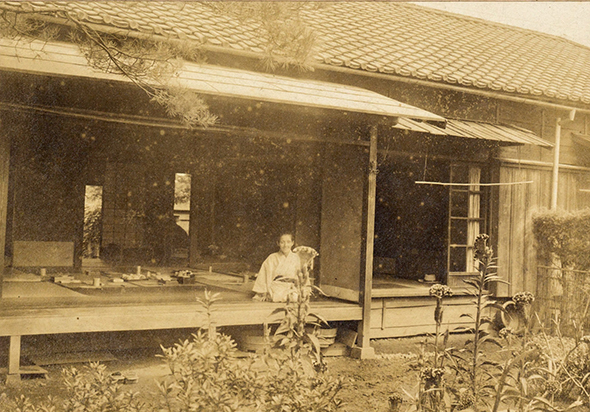
Yae relaxed and saw the garden with blooming cockscombs. This picture was shot by Hekigoto Kawahigashi, a pupil of Shiki, in September 1911. (Material deposited from Shikian)
Shiki expressed changes of the four seasons in his poems.
Spring
春惜しむ一日画をかき詩を作る (明治35年(1902))
On a spring day, I devote all my time to create paintings and poems
Summer
夕立や日のさす方へふつて行く (明治30年(1897))
A afternoon shower, Moving toward the sunshine
Autumn
鶏頭ヤ糸瓜ヤ庵ハ貧(ひん)ナラズ (明治34年(1901))
Cockscombs and loofahs, The hermitage is not poor
Winter
人も来ぬ根岸の奥よ冬籠(ふゆごもり) (明治30年(1897))
In the depths of Negishi, Where nobody comes, Confinement in winter

Ritsu, a sister of Shiki, and his friends planted a variety of flowers and trees in the garden of Shikian. Illustrations of the small garden are on "Shoen no Ki," in which each flower and tree, including a Japanese chinquapin, bamboo, pine tree, bush clover, beard, cockscomb, Chinese bellflower, morning glory, hardy begonia, marvel-of-Peru, Joseph's coat and common zinnia, are described by his haiku poems. Both a moss rose and its alias "hideriso" appear in those poems. Shiki's favorite roses and loofahs that seem to be symbols of Shikian were not yet planted in those days. The trellis of loofahs was made in 1901.

The site of a water well that the Masaoka family used















